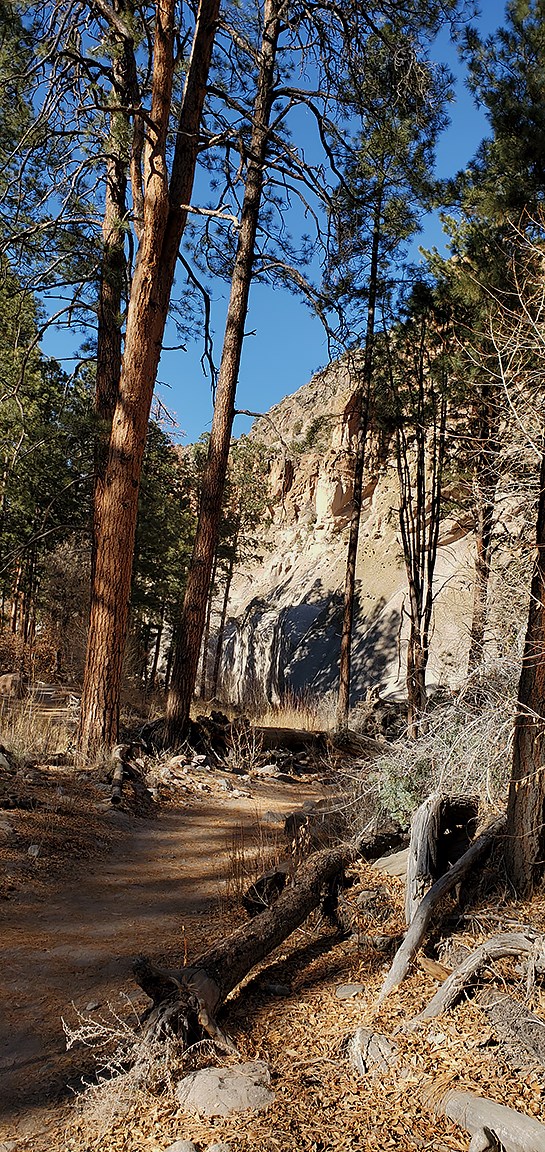
Photo by Sally King Stop 2: Compacted by their own weight over time, the ash flows became a soft rock known as tuff. The tuff is light in color, very porous, and has a sandy texture. In some areas, pumice (a very lightweight and frothy rock) is a major component of the tuff. Pumice forms when magma high in dissolved gas reaches the earth’s surface, creating a violent eruption followed by rapid cooling. You can easily see where the tuff is rich in pumice due to the ready erosion and the forming of holes in a Swiss cheese-like pattern on the surface of the cliffs. The Ancestral Pueblo people carved these areas into cavates (human-created caves). From here you can also see areas of denser tuff that did not lend themselves to carving and no cavates were built there.
|
Last updated: April 28, 2025
